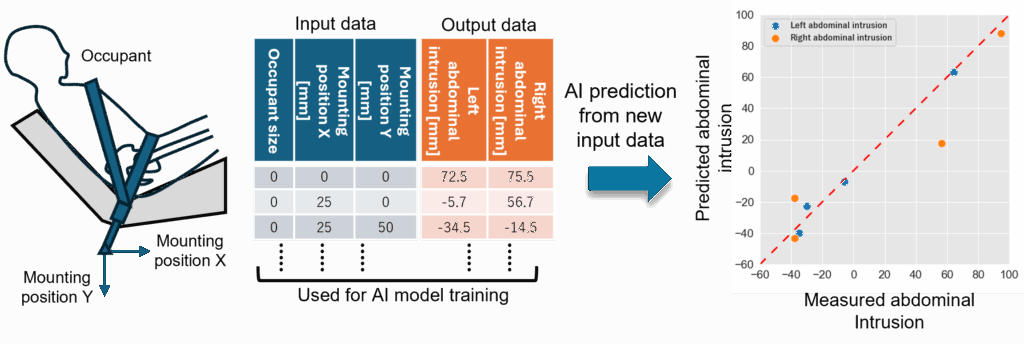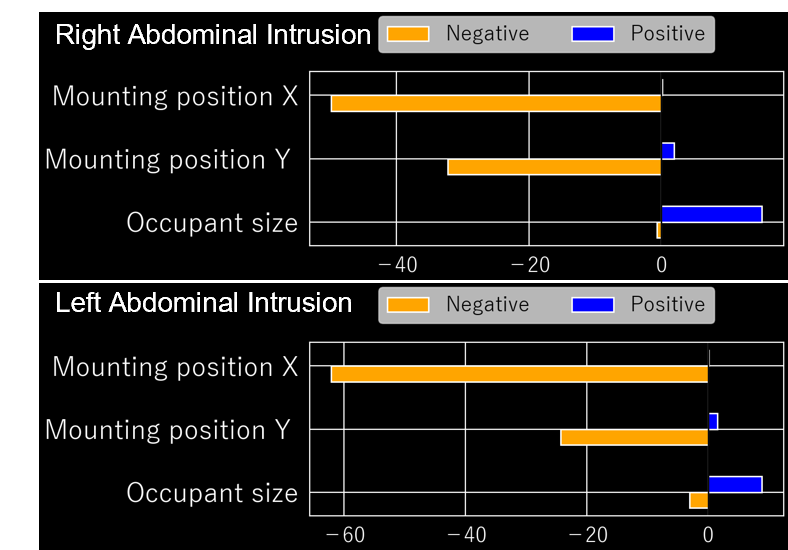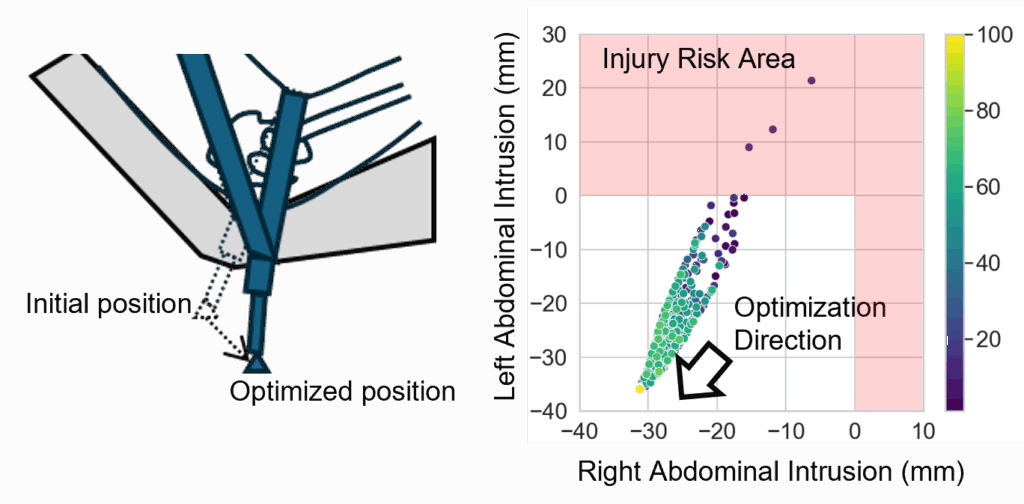Multi-Sigma® constructed a surrogate model from CAE crash simulations to derive optimal safety device configurations while accounting for diverse occupant body sizes.
1. Surrogate modeling for injury prediction using Multi-Sigma®
Using only 14 crash simulation cases, Multi-Sigma® successfully created a surrogate model for predicting abdominal injury risk in small-statured adult female and male occupants in suboptimal seating positions. This model demonstrated high accuracy despite limited data.

2. Leveraging factor analysis to highlight key contributors to injury risk
Factor analysis showed that a lower and more forward seat belt mounting position reduces the risk of excessive abdominal injury, even in poor posture scenarios. Additionally, small female occupants were shown to have a higher risk of abdominal injury than average male occupants under the same design conditions.

3. Optimizing safety configurations for body size variation
Multi-Sigma® optimizes design under constrained inputs. In this case, body type was fixed due to higher abdominal injury risk in small female occupants and seat belt position was limited to 0–40 mm. Within these limits, the model identified a design that minimizes injury risk. The red area in the figure shows the abdominal intrusion zone, clarifying design boundaries.

(Note 1) Data source: Saito, H., Pipkorn, B., and Lubbe, N., “Understanding the Influence of Seat Belt Geometries on Belt-to-Pelvis Angle Can Help Prevent Submarining,” SAE Int. J. Trans. Safety 10(2):463-481, 2022, https://doi.org/10.4271/09-10-02-0017.
(Note 2) Surrogate model trained with 14 samples, validated on 4 samples
(Note 3) Body types defined as: 0 = average male, 1 = small female
(Note 4) Abdominal injury index = max belt intrusion above the ASIS (anterior superior iliac spine)
